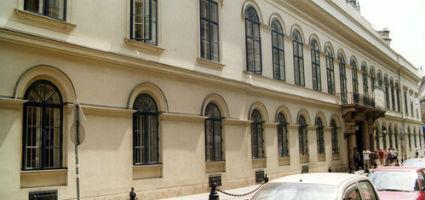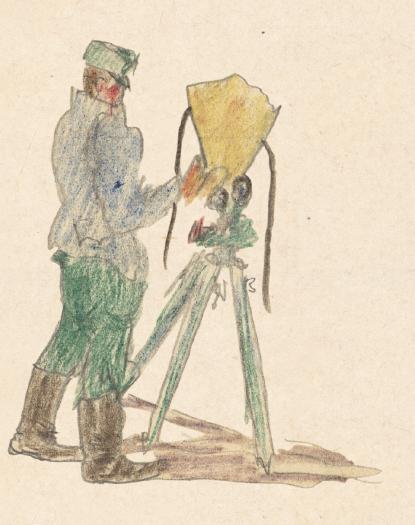2024. April 24. Wednesday
Museum of Literature Petőfi - Budapest
 |
Address: 1053, Budapest Károlyi u. 16.
Phone number: (1) 317-3611
E-mail: muzeuminf@pim.hu
Opening hours: Tue-Sun 10-18
|
The exhibition has closed for visitors.
2014.11.05. - 2016.01.10.
Museum tickets, service costs:
|
Ticket for adults
(valid for the permanent exhibitions)
|
600 HUF
|
/ capita
|
|
Ticket for adults
(valid for the temporal exhibitions)
|
800 HUF
|
/ capita
|
|
Ticket for students
(valid for the permanent exhibitions)
|
300 HUF
|
/ capita
|
|
Ticket for students
(valid for the temporal exhibitions)
|
400 HUF
|
/ capita
|
|
Ticket for pensioners
(valid for the permanent exhibitions)
|
300 HUF
|
/ capita
|
|
Ticket for pensioners
(valid for the temporal exhibitions)
|
400 HUF
|
/ capita
|
|
Ticket for families
(valid for the permanent exhibitions)
|
1100 HUF
|
/ family
|
|
Ticket for families
(valid for the temporal exhibitions)
|
1500 HUF
|
/ family
|
|
Guide for students
(accompanied by a museum pedagogist )
|
2500 HUF
|
/ group
|
The Petőfi Literary Museum's exhibition deals with the First World War due to the profile of the institution, it is presented regarding the war experience of Hungarian writers and poets, adding their interpretation of the years between 1914 and 1918. The exhibition will focus on contemporary literary works and personal narrative sources and undertakes to convey such individual experiences by way of proposing the opportunity of a new role for the writers in its structure. Thus, the duality of the world of war, namely the front and the hinterland are emphatically manifested in the design of space.

Applying a novel exhibition practice, the exhibition provides two parallel paths with a common starting point and end point. The introduction are the various utopias regarding the future from the pre-war periods, but with confidence in technical developments of the present the idyll of which was suddenly stirred up by the assassination in Sarajevo and the ensuing declaration of war. Just like with the given historical context, the dividing line at the exhibition is the enlistment, which doomed most of the adult male population to leave for the war or remain at home. On this basis, the troubled world of the hinterland and the spiritual life at the front unfolds alongside. We present the three main roles the writers or journalists could take, thus we can meet Endre Ady, who was unsuitable for military service , as well as Mihály Babits, Menyhért Lengyel and Zsigmond Móricz on one side, while the soldiers Géza Gyóni, Józsi Jenő Tersánszky, Ernő Szép or Béla Balázs on the other side. The diversity of locations is provided by on the various life situations, such as being a prisoner of war or internment. We find the war correspondent Ferenc Molnár, Lajos Biró, Margit Vészi in transition roles, who only observed the world of battles in the trenches and mediated their experience to the hinterland through increased censorship. But censorship equally hampered everyone's life, the communication of soldiers with family back home, as well as the daily work of journalists. These were preserved by contemporary manuscripts and newspapers that the visitors can also see in the exhibition.
The writer's vocation necessarily entails reflection on the outside world. Their letters, recollections, diaries report on the atmosphere of war public approach to that, also of the daily life at military hospitals and the trenches, as well as life in the transformed hinterland thus preserving the imprint of the mental universe, which covered the emotions and pondering of the writers on the war (including themselves). On the other hand, by disseminating their war-themed works and fiction we can provide an image of the nature of the European intelligentsia's engagement in World War I and the first emergence of "war culture" in Hungary. That is, the writers and poets did not only disclose their ideas about war in the public sphere to our visitors but because of the peculiarities of the subject events in the private sector will be of great emphasis. Through this duality, the context of personal concern, opinions about the war and intellectual engagement in the war manifest themselves.
Both within individual chapters and the full outline of the exhibition simultaneous variations and temporal changes in the intellectual attitudes are expressed, therefore, not only initial enthusiasm and gradual disillusionment manifest themselves, but also the immediate, consistent rejection and the ever growing pacifism. Based on this logic, we deal with the theme of madness for the allegory of war, which expresses both the mass psychosis of the beginning of the war and the gradual of psychological and physical breakdown. All this – accompanied by contextual representation of Spanish flu – serves as an introduction to the funeral endowed with symbolic suggestion, which, is shown in a specific form of the funeral of Ady, shows, however, providing the opportunity to commemorate all the victims of the war. Thus, we do not only involve the Ady altar by Miklós Melocco restored to the occasion of the exhibition, which has a complex message anyway, but by the various angles of the poet's funeral we offer, we provide new context, new interpretations for that. The exhibition ends with the issues of the tragedy in literature and attempts to come to terms with it - with an outlook on utopias born from war experience.
To show the front, the hinterland and captivity, as well as typical wartime challenges we chose to show writers' personal belongings, volumes and manuscripts as well as contemporary works of art, posters and photos of appropriate mood, using interactive computer education points. We regard all ages our target group. Although the exhibition can be independently interpreted, we set up museum educational workshops in the museum in order to provide a more effective literature and history teaching.
The exhibition was established with the support of the First World War Centenary Memorial Committee.

Applying a novel exhibition practice, the exhibition provides two parallel paths with a common starting point and end point. The introduction are the various utopias regarding the future from the pre-war periods, but with confidence in technical developments of the present the idyll of which was suddenly stirred up by the assassination in Sarajevo and the ensuing declaration of war. Just like with the given historical context, the dividing line at the exhibition is the enlistment, which doomed most of the adult male population to leave for the war or remain at home. On this basis, the troubled world of the hinterland and the spiritual life at the front unfolds alongside. We present the three main roles the writers or journalists could take, thus we can meet Endre Ady, who was unsuitable for military service , as well as Mihály Babits, Menyhért Lengyel and Zsigmond Móricz on one side, while the soldiers Géza Gyóni, Józsi Jenő Tersánszky, Ernő Szép or Béla Balázs on the other side. The diversity of locations is provided by on the various life situations, such as being a prisoner of war or internment. We find the war correspondent Ferenc Molnár, Lajos Biró, Margit Vészi in transition roles, who only observed the world of battles in the trenches and mediated their experience to the hinterland through increased censorship. But censorship equally hampered everyone's life, the communication of soldiers with family back home, as well as the daily work of journalists. These were preserved by contemporary manuscripts and newspapers that the visitors can also see in the exhibition.
The writer's vocation necessarily entails reflection on the outside world. Their letters, recollections, diaries report on the atmosphere of war public approach to that, also of the daily life at military hospitals and the trenches, as well as life in the transformed hinterland thus preserving the imprint of the mental universe, which covered the emotions and pondering of the writers on the war (including themselves). On the other hand, by disseminating their war-themed works and fiction we can provide an image of the nature of the European intelligentsia's engagement in World War I and the first emergence of "war culture" in Hungary. That is, the writers and poets did not only disclose their ideas about war in the public sphere to our visitors but because of the peculiarities of the subject events in the private sector will be of great emphasis. Through this duality, the context of personal concern, opinions about the war and intellectual engagement in the war manifest themselves.
Both within individual chapters and the full outline of the exhibition simultaneous variations and temporal changes in the intellectual attitudes are expressed, therefore, not only initial enthusiasm and gradual disillusionment manifest themselves, but also the immediate, consistent rejection and the ever growing pacifism. Based on this logic, we deal with the theme of madness for the allegory of war, which expresses both the mass psychosis of the beginning of the war and the gradual of psychological and physical breakdown. All this – accompanied by contextual representation of Spanish flu – serves as an introduction to the funeral endowed with symbolic suggestion, which, is shown in a specific form of the funeral of Ady, shows, however, providing the opportunity to commemorate all the victims of the war. Thus, we do not only involve the Ady altar by Miklós Melocco restored to the occasion of the exhibition, which has a complex message anyway, but by the various angles of the poet's funeral we offer, we provide new context, new interpretations for that. The exhibition ends with the issues of the tragedy in literature and attempts to come to terms with it - with an outlook on utopias born from war experience.
To show the front, the hinterland and captivity, as well as typical wartime challenges we chose to show writers' personal belongings, volumes and manuscripts as well as contemporary works of art, posters and photos of appropriate mood, using interactive computer education points. We regard all ages our target group. Although the exhibition can be independently interpreted, we set up museum educational workshops in the museum in order to provide a more effective literature and history teaching.
The exhibition was established with the support of the First World War Centenary Memorial Committee.
